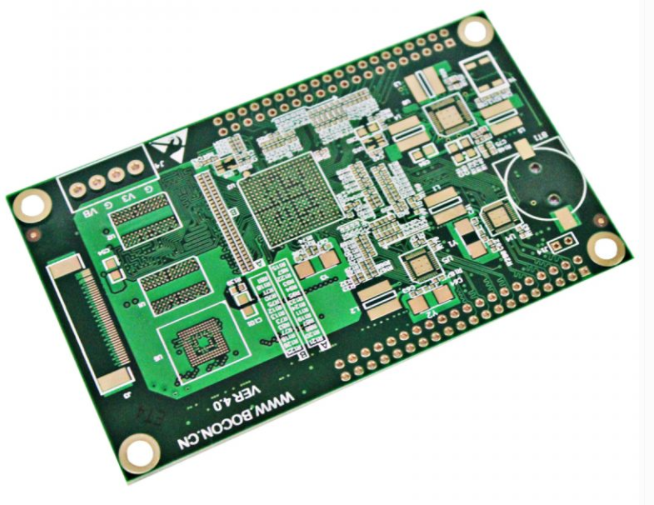Bad analysis of PCB circuit board via impassability
1. Preface
Hole-free copper is also called through-hole impassability. It is a functional problem of PCB circuit boards. With the development of technology, PCB circuit board accuracy (aspect ratio) requirements are getting higher and higher, which not only brings troubles to PCB circuit board manufacturers ( The contradiction between cost and quality), and it has planted serious quality hidden dangers for downstream customers! The editor of Zhongke circuit board manufacturer will take a look with you, and hope to have some enlightenment and help to related colleagues!
Second, the classification and characteristics of hole-free copper
1. There are burrs in the PCB circuit board holes that cause the vias to be blocked, and the hole walls are not smooth and burrs when drilling, which leads to copper sinking and uneven copper holes during electroplating. Once the customer debugs the thin copper area of the power-on hole, it may be burned, causing the PCB circuit board to open and cause the via to be blocked.
2. PCB circuit board electric copper thin hole without copper:
(1) The whole board of the circuit board has no copper in the electrical copper thin holes: the electrical layers of the surface copper and the copper plate are very thin. After the micro-etching of the electrical pre-processing, most of the electrical copper in the middle of the hole is etched away. Figure electric layer encased;
(2) There is no copper in the thin hole of the electric copper in the hole: the electric layer of the surface copper plate is uniform and normal, and the electric layer of the hole in the hole shows a decreasing trend of sharpening from the hole to the fracture, and the fracture is generally in the middle of the hole, and the copper at the fracture Layer left
The right has good uniformity and symmetry, and the fracture is covered by the electrical layer after the electrical image.

3. No copper in PTH hole: The electrical layer of the surface copper plate is uniform and normal, and the electrical layer of the plate in the hole is distributed evenly from the hole to the fracture. After the electrical connection, the fracture is covered by the electrical layer. Repair broken holes:
(1) Copper inspection and repairing broken holes: the electrical layer of the surface copper plate is uniform and normal, the electrical layer of the hole copper plate has no tendency to sharpen, and the fracture is irregular, which may appear in the hole or in the middle of the hole, and there will often be rough bumps on the hole wall. If the fault occurs, the fracture is covered by the electrical layer after the electrical connection.
(2) Corrosion inspection and repairing the hole: the electrical layer of the surface copper plate is uniform and normal, the electrical layer of the hole copper plate has no tendency to sharpen, and the fracture is irregular, which may appear in the hole or in the middle of the hole, and there will often be rough convexities on the hole wall. It is not good, and the electrical layer at the fracture is not covered by the electrical layer of the board.
4. No copper in the plug hole: After the PCB circuit diagram is electro-etched, there is obvious material stuck in the hole, most of the hole wall is etched away, and the electrical layer at the fracture is not covered by the electrical layer of the board.
5. Repair broken holes
(1) Copper inspection and repair of broken holes: The electrical layer of the copper plate on the PCB circuit board surface is uniform and normal, the electrical layer of the hole copper plate has no tendency to sharpen, and the fracture is irregular, which may appear in the hole or in the middle of the hole. Rough bumps and other defects appear, and the fracture is covered by the electrical layer after the electrical connection.
(2) Corrosion inspection and repair: the electrical layer of the copper plate on the PCB circuit board surface is uniform and normal, the electrical layer of the hole copper plate has no tendency to sharpen, and the fracture is irregular, which may appear in the hole or in the middle of the hole, and it is often Rough bumps and other defects appear, and the electrical layer at the fracture is not covered by the electrical layer of the board.
6. There is no copper in the electrical hole: the electrical layer at the fracture does not cover the electrical layer of the board-the electrical layer is uniform in thickness with the PCB electrical layer, and the fracture is uniform; the electrical layer tends to sharpen until it disappears, and the electrical layer of the board The layer exceeds the electrical layer and continues to extend for a certain distance before being disconnected.
3. Improvement direction
1. Materials (plates, potions);
2. Measurement (syrup test, copper inspection and visual inspection);
3. Environment (variations caused by dirty, messy and messy);
4. Methods (parameters, procedures, processes and quality control);
5. Operation (upper and lower boards, parameter setting, maintenance, abnormal handling);
6. Equipment (crane, feeder, heating pen, vibration, pump, filter cycle).